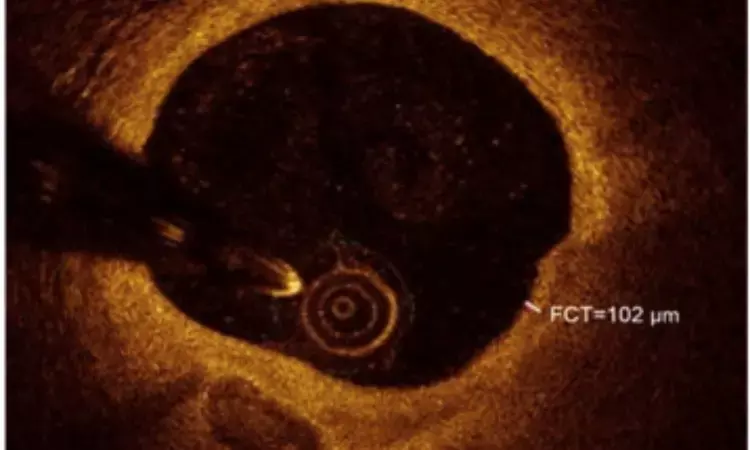- Home
- Medical news & Guidelines
- Anesthesiology
- Cardiology and CTVS
- Critical Care
- Dentistry
- Dermatology
- Diabetes and Endocrinology
- ENT
- Gastroenterology
- Medicine
- Nephrology
- Neurology
- Obstretics-Gynaecology
- Oncology
- Ophthalmology
- Orthopaedics
- Pediatrics-Neonatology
- Psychiatry
- Pulmonology
- Radiology
- Surgery
- Urology
- Laboratory Medicine
- Diet
- Nursing
- Paramedical
- Physiotherapy
- Health news
- Fact Check
- Bone Health Fact Check
- Brain Health Fact Check
- Cancer Related Fact Check
- Child Care Fact Check
- Dental and oral health fact check
- Diabetes and metabolic health fact check
- Diet and Nutrition Fact Check
- Eye and ENT Care Fact Check
- Fitness fact check
- Gut health fact check
- Heart health fact check
- Kidney health fact check
- Medical education fact check
- Men's health fact check
- Respiratory fact check
- Skin and hair care fact check
- Vaccine and Immunization fact check
- Women's health fact check
- AYUSH
- State News
- Andaman and Nicobar Islands
- Andhra Pradesh
- Arunachal Pradesh
- Assam
- Bihar
- Chandigarh
- Chattisgarh
- Dadra and Nagar Haveli
- Daman and Diu
- Delhi
- Goa
- Gujarat
- Haryana
- Himachal Pradesh
- Jammu & Kashmir
- Jharkhand
- Karnataka
- Kerala
- Ladakh
- Lakshadweep
- Madhya Pradesh
- Maharashtra
- Manipur
- Meghalaya
- Mizoram
- Nagaland
- Odisha
- Puducherry
- Punjab
- Rajasthan
- Sikkim
- Tamil Nadu
- Telangana
- Tripura
- Uttar Pradesh
- Uttrakhand
- West Bengal
- Medical Education
- Industry
High mannose: A new biomarker of coronary artery disease, evaluated by researchers

Italy: Data from research published in the International Journal of Cardiology adds novel evidence that high circulating mannose is a biomarker of coronary artery disease (CAD) that is consistent across measures of severity of vessel involvement measures and independent of the traditional correlates of CVD. Furthermore, baseline mannose also had some predictive power for incident clinical events despite the small number of cardiovascular outcomes.
"High mannose might be a signature of CAD with a vulnerable plaque phenotype," Ele Ferrannini, CNR Institute of Clinical Physiology, Pisa, Italy, and colleagues wrote in their study. "And, high mannose was an independent predictor of adverse outcomes."
Previous studies have shown high mannose to be associated with insulin resistance and cardiovascular disease (CVD). Dr. Ferrannini and the tram aimed to establish whether mannose is associated with anatomical evidence of CAD.
For this purpose, the researchers measured plasma mannose concentrations by liquid chromatography/tandem mass spectrometry in a discovery cohort (n = 513) and a validation cohort (n = 221) of carefully phenotyped individuals. In both cohorts, state-of-the-art imaging techniques (coronary computed coronary tomography angiography (CCTA), invasive coronary angiography, and optical coherence tomography) were used to quantitate CAD.
Associations of mannose with angiographic variables and biomarkers were also tested. Using the Kaplan-Meier estimator, survival analysis was performed.
Based on the study, the researchers found the following:
· Mannose was related to indices of CAD and features of plaque vulnerability.
· In the discovery cohort, mannose was a marker of quantity and quality of CCTA-proven CAD, and subjects with a mannose level in the top quartile had a significantly higher risk of CVD events/death.
· In the validation cohort, mannose was significantly associated with fibrous cap thickness < 65 μm (odds ratio = 1.32 per each 10 μmol/L mannose change) and was an independent predictor of death (hazard ratio for mannose≥vs < 84.6 μmol/L: 4.0).
To conclude, the results showed add novel evidence that high mannose is a signature of CAD with a vulnerable plaque phenotype, consistently across measures of severity of vessel involvement and independent of the traditional CVD correlates, and that it is an independent predictor of incident adverse outcomes.
Reference:
The study titled, "Mannose as a biomarker of coronary artery disease: Angiographic evidence and clinical significance," was published in the International Journal of Cardiology.
Dr Kamal Kant Kohli-MBBS, DTCD- a chest specialist with more than 30 years of practice and a flair for writing clinical articles, Dr Kamal Kant Kohli joined Medical Dialogues as a Chief Editor of Medical News. Besides writing articles, as an editor, he proofreads and verifies all the medical content published on Medical Dialogues including those coming from journals, studies,medical conferences,guidelines etc. Email: drkohli@medicaldialogues.in. Contact no. 011-43720751


